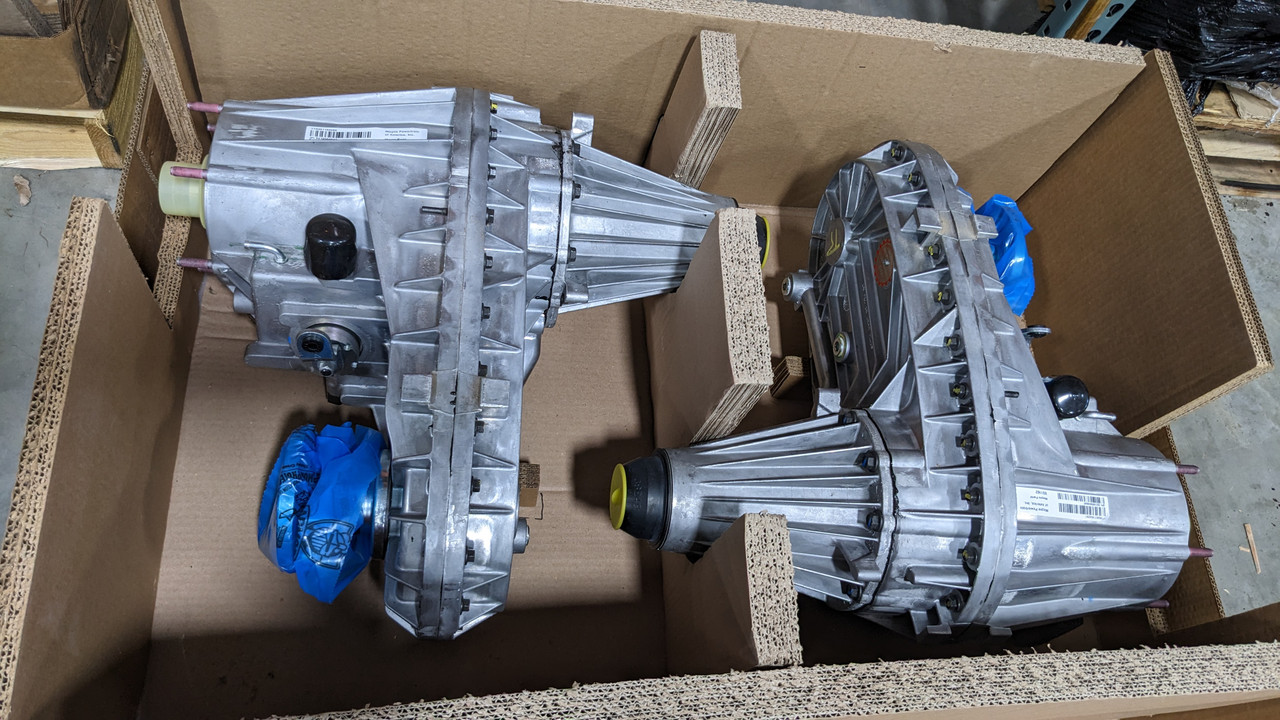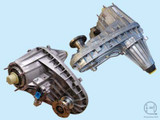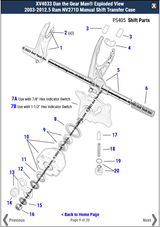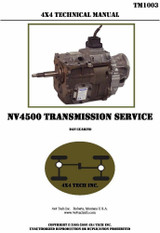AWD vs Automatic 4x4 Transfer Cases
Theory of an Automatic 4x4 Transfer Case
Many 4x4 truck owners ask what the difference is in a vehicle with All Wheel Drive (AWD) vs an Automatic Four Wheel Drive (4WD) Transfer Case. For this topic we will keep it oriented towards later model 4x4 domestic trucks, as many cars and imported vehicles may treat the scenarios differently from a mechanical standpoint. In this example we specifically reference GM 4x4 trucks as until recent years held a majority of the market for an Automatic 4x4 transfer case in full size trucks.
How does Automatic 4x4 Work?
AWD vehicles are always in 4wd, there is typically a differential of some sort inside the transfer case so it doesn't burn up from too much constant stress; it is very similar to one that would be found inside an axle. Some newer vehicles also use electronics and friction material to help distribute power, in addition to individual braking traction control.
Auto 4x4 is actually an interesting feature. GM has a disconnect in the front axle since they began moving away from manual locking hubs on the front axle in 1989. They did this initially to help with fuel economy (as did Chrysler beginning in the mid 1980's), although almost everything in the front axle still turns at highway speed. This does cut rolling resistance from the front differential itself slightly although it causes wear on select internal components, but that's another story.
They figured out they could add a "driver convenience" with this. What they do is in 4x4 Auto, that disconnect is always engaged. There are speed sensors in the transfer case that detect a variance in front and rear output shaft speed, and when detected 4x4 is engaged in the transfer case by friction plates (or clutch packs) automatically until no slippage is detected. You may notice the Automatic 4x4 light on the dash will blink when slippage is occurring, this is generally a normal function indicating the friction plates are in an "active" state.
In straight 4x4 mode these Automatic transfer cases always have both the axle disconnect and transfer case friction plates engaged.
It is also frequent for if clutches are worn, 4x4 only works in Auto. In Auto, the friction plates are tightening electronically via an engagement fork until no transfer case output shaft speed variance is detected between the front and rear. In 4x4, friction plate engagement fork placement is predetermined, but if friction plates are worn there is no tension so it doesn't drive the front output shaft like it should.
Comparison to a typical 4x4 Transfer Case
In comparison, a non-Automatic 4x4 transfer case is locked into 4WD mechanically with no friction plates. Power is (generally) split equally to front and rear axles. Traction control (when equipped) is performed via wheel speed sensors and individual corner activation of the ABS System. Note that Automatic 4x4 transfer cases in Auto mode selectively activate both the transfer case friction plates and individual ABS activation according to the vehicles software programming.
Can I drive on the highway in Auto 4x4?
Driveability- 4x4 Auto can be theoretically driven at any speed in any condition mechanically speaking. It is no different than Chrysler full size trucks without an axle disconnect from 2003-2013. Your front axle internals are always turning anyway, and the axle differential keeps stress off the parts. The Automatic Transfer Case friction plates are never engaged until wheel slippage occurs, the only thing affected is a small percentage of fuel economy pointed out earlier in this article.
Shifting into Automatic 4x4 while on the highway can be done as the system is designed for it, however if done frequently will cause extra wear to the shift parts within the axle.
Straight 4x4 mode (in any transfer case) is generally something you don't want to be in very long on non-slippery surfaces. Internal stresses can build up in the drivetrain and cause extra wear and tear, and eventually failure. A couple miles intermittently generally doesn't affect it much, but definitely don't take a road trip like that unless you're in a blizzard.
When To Use 2 wheel drive, Automatic 4x4, and 4x4
In conclusion, I cannot tell you how to drive or make an all-inclusive article on when to use 4 wheel drive. I will however make a very generalized description based on manufacturers recommendations and theory of parts operation, and also recommend to never drive faster than road conditions allow or a "safe speed" as determined by your local law enforcement. No legal driving advice is given in this article!
If the surface you are driving on is firm/ pavement-like, 2WD is all that is necessary.
For intermittently slippery surfaces, Automatic mode can be quite useful. However, it is important to note that wheel slippage must already be occurring for the friction plates to lock into 4 Wheel Drive.
Longer stretches of slippery or loose/dirt surfaces or a completely snow covered roads should generally be in straight 4x4 all of the time. Automatic mode in these scenarios will cause premature wear to the friction plates and other transfer case internal components.
To get the most life out of your parts, use Auto 4x4 when you think there might be a little wheel slippage. If you come to a nasty section of road, go from Auto to straight 4x4 before wheel slippage occurs, and resume Auto mode once you are past that point. Doing this does not shift front axle components (reducing wear) and just engages the transfer case clutch plates (also reduces wear if done before wheel slippage as output shaft speed is synchronized).
Some of the latest model 4x4 trucks are using different variations of traction systems. We will cover those in a later article as manufacturers decide on a permanent system.
-Article written by Jesse at Torque King 4x4, December 16 2022
Latest News
2003-2012 Ram NV271D Transfer Case Fluid and Torque Specifications, plus Recommended Mainteinance Schedule
The New Venture NV271D Manual Shift Transfer Case was the base transfer case for 2003-2012 Dodge and...
New Exploded View for 2003-2012.5 Dodge Ram Manual Shift NV271D Transfer Cases!
New, Easy-to-Use, Interactive XV4033 Exploded View by Dan the Gear Man® for 2003-2012.5 Dodge...
New Tools, Parts, Exploded Views, CAD Drawings, and Videos added in January 2023
We have added a number of new tools, parts, Exploded Views, CAD drawings, and videos to our websi...
AWD vs Automatic 4x4 Transfer Cases
Theory of an Automatic 4x4 Transfer CaseMany 4x4 truck owners ask what the difference is in a vehicl...
Video Updates
I am excited to announce that we have a new format for our service videos. Thes...
Torque King 4x4 to be Featured on 'Viewpoint' with Dennis Quaid
Something exciting is in the works for Torque King 4x4. Read on to find out all the details!Small...





